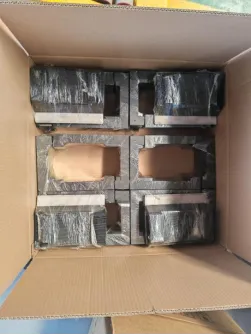way covers and bellows
An Overview of Way Covers and Bellows Protecting Machinery and Ensuring Longevity
In the world of machinery and manufacturing, the protection of critical components is essential for maintaining efficiency and prolonging equipment life. Among the myriad of protective solutions available, way covers and bellows stand out as vital accessories that safeguard moving parts from debris, contamination, and wear. This article delves into the importance, types, and benefits of way covers and bellows, illustrating their role in industrial applications.
Understanding Way Covers
Way covers, also known as way protection covers, are specifically designed to shield the guideways and moving parts of machines, such as CNC machines, lathes, and milling equipment. The primary function of these covers is to prevent dust, chips, coolant, and other contaminants from entering the machine's interior, which could otherwise lead to accelerated wear, decreased accuracy, and potential failure of critical components.
Way covers are typically constructed from durable materials such as rubber, nylon, or metal, depending on the specific application and environmental conditions. They come in various shapes and sizes, tailored to fit different machine designs. Common types of way covers include
1. Flat Way Covers These are simple, flat sheets that cover linear guideways, providing basic protection against dust and debris. 2. Accordion-Type Way Covers Designed in a flexible, accordion-like structure, these covers can easily expand and contract as the machine operates, offering excellent protection while accommodating the moving parts' range of motion.
3. Telescopic Way Covers These are similar to accordion covers but are designed to extend and retract along their length, providing protection against chips and coolant in high-speed operations.
The Role of Bellows
Bellows are flexible, tubular structures that serve a similar protective function as way covers but with added benefits. Unlike way covers that primarily protect flat surfaces, bellows are often used in applications where quick movement or extreme flexing might occur. Their construction allows them to endure significant compression and extension without compromising their integrity.
Typically made from rubber, silicone, or fabric, bellows offer excellent resistance to wear and environmental conditions such as temperature fluctuations and exposure to chemicals. There are several common types of bellows
1. Compression Bellows These bellows compress in length but maintain their diameter, making them ideal for situations where vertical space is limited. 2. Expansion Bellows Designed to absorb fluctuations in pressure and motion, expansion bellows allow for longitudinal movement while maintaining protection against contaminants.
way covers and bellows

Benefits of Using Way Covers and Bellows
The adoption of way covers and bellows in machinery presents several significant benefits
1. Increased Longevity By reducing exposure to contaminants, these protective devices greatly extend the lifespan of machine components, leading to lower maintenance costs and less frequent replacements.
2. Enhanced Safety Way covers and bellows help prevent accidents by reducing the risk of moving parts becoming entangled in debris or external materials, thereby promoting a safer working environment.
3. Improved Accuracy Keeping contaminates at bay ensures that machines operate smoothly and maintain precision, which is crucial for high-stakes manufacturing processes.
4. Reduced Downtime The protective nature of way covers and bellows minimizes the likelihood of equipment failure, which in turn reduces downtime and boosts productivity.
5. Cost-Effectiveness Investing in reliable protective solutions ultimately saves money by preventing damage and prolonging the need for repairs and replacements.
Conclusion
In summary, way covers and bellows play a crucial role in preserving machinery and enhancing operational efficiency. Their ability to protect against contaminants while accommodating the dynamic nature of machine components underscores their importance in the manufacturing sector. As industries continue to evolve, the use of these protective solutions will likely expand, ensuring that machinery remains functional, efficient, and safe for years to come.








